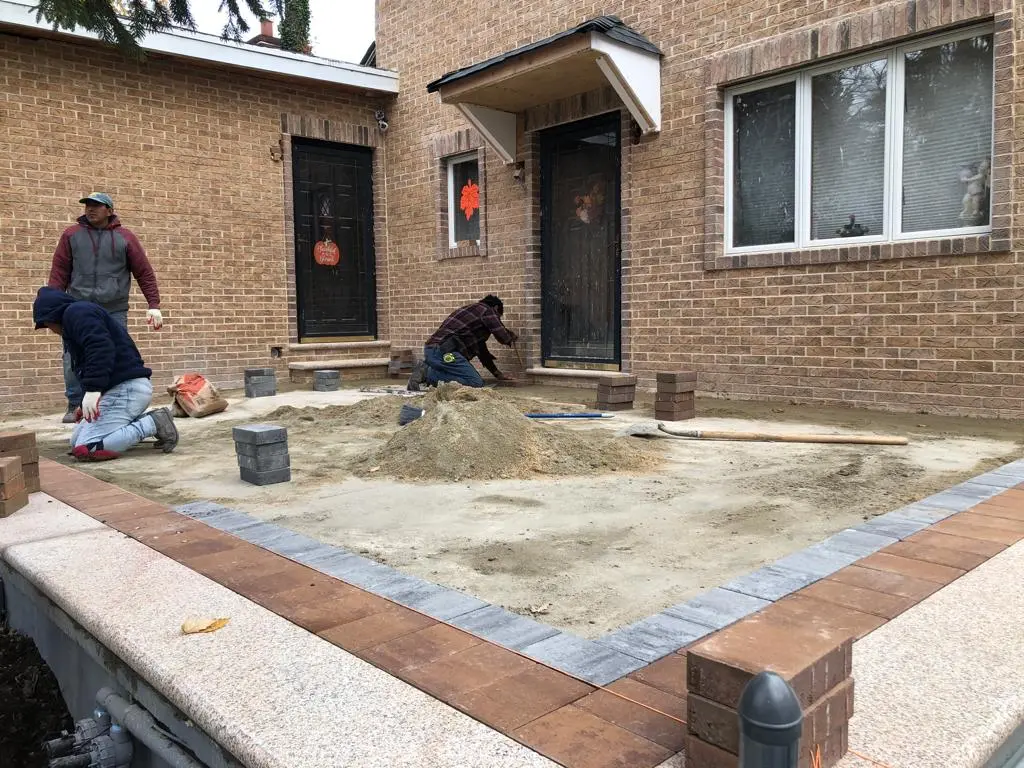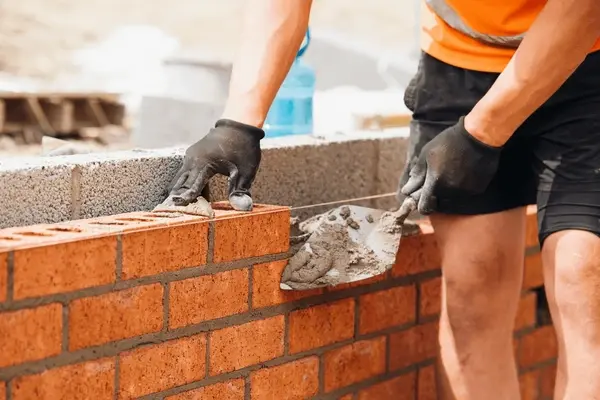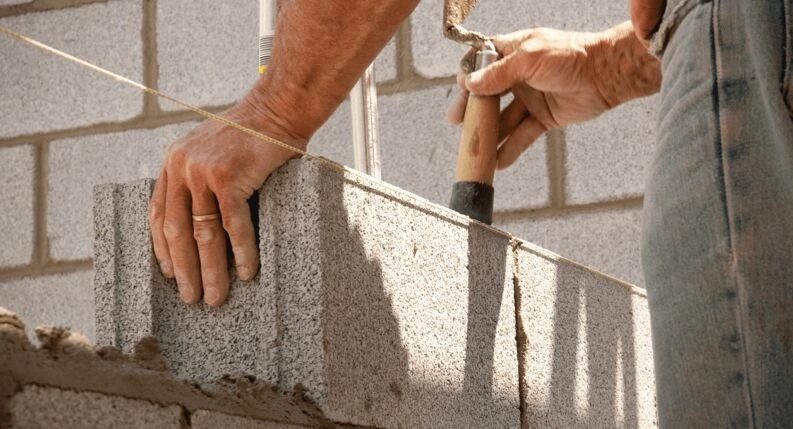There’s a variety of masonry work that have been for centuries as a foundation of construction of many historical structures and providing excellent durability. From the ornamental stone arch in houses or other buildings to the solid brickwork walls, masonry is critically indispensable in the current construction world.
This blog is the practical crash course you need to master the basics of masonry, regardless of whether you’re a tradesman, a contractor, or simply a handy homeowner, or a DIY nut! Here, we will discuss all of the different kinds of market research, the basic and advanced tools involved, the steps involved in each process, the potential mistakes a firm might make, and how to go about hiring the right people for the job. Secondly, whether you are a tourist, or a resident of Queens, there are things you simply have to know about the neighborhood. Let’s get started.
1. Introduction to Masonry Work
Masonry is the method of construction through placement of individual units such as brick, stones, or concrete blocks and then joining these with mortar. The foundation is even older, and one should remember the Great Wall of China, or the pyramids in Egypt as true examples of stonewash that will not give in to time.
Today, however, masonry is still essential in construction due to strength, flexibility of design, and economy. For residences, chimneys, patios or for the business establishments, masonry is commonly the structure and the exterior.
2. Types of Masonry work
Masonry is a diverse sub-type and they each have their unique requirement as well as outlook. Here are the most common types:
Brick Masonry
One of the oldest forms is the brick masonry. Bricks: Fire-baked from moldable clay that last long, require low amounts of money and are available almost everywhere. They are well suitable to be placed at the main walls of the house, along with the patio as well as fireplace.
Stone Masonry
Stone masonry offers a very high degree of strength as well as a more or less smooth and natural look. It employs materials such as granite marble or limestone and it is common in retaining walls, pillars and facades.
Concrete Masonry
This form employs concrete blockages which are comparatively larger and have a hollow structure as to that of bricks. Structural walls are best served by concrete masonry because of the material’s hardness and insulating capacity.
Stucco Masonry
Stucco has cement, sand and is applied on walls as a surface coating. It is preferred because of its variety of the surface that has made it gain popularity when it comes to designing the exterior parts of the house.
Block Masonry
Hollow blocks are bigger than bricks, and they are inexpensive, light and mainly used for industrial and commercial buildings.
3. Masonry Tools and Equipment
Masonry work needs tools to avoid complications that arise due to inaccuracies and inefficiency of the structures. Here are a few essentials:
Trowels: For spreading mortar evenly.
Mason’s Hammer: Serves to split and trim bricks or stones.
Levels: In charge of guaranteeing that the structures are perpendicular and horizontal.
Brick Jointer: This tool has a flat side that smoothes and another side to shape the mortar joints.
Mortar Mixers: Only for preparing a large batch of mortar.
Chisels: It is used in carving and shaping of stonework or bricks and other construction material made from clay.
Wheelbarrows: Carrying bricks, stones or mortar.
Safety Gear: A favorite of gloves, goggles, and masks to ensure the safety of the workers is enhanced.
4. The Masonry Process
The art of making a masonry project is quite a process and is carried out methodically. Here’s a typical process from start to finish:
Step 1: Planning
Choose an element and section out the structure, find out the required material suited for the purpose and location.
Step 2: Preparing the Site
Clean the site to bring down structure then prepare the site. The foundation is of immense importance. It should be strong enough to create a stable foundation.
Step 3: Mixing Mortar
Mix cement, lime, sand in the correct proportion as the proportion required to enhance the production of mortar.
Step 4: Laying Units
Lay them properly, each with mortar in between the bricks, stones or blocks for joining them together.
Step 5: Sealing and Finishing
Substrate preparation involves washing of the surface, protection of the structure against damage by weather factors, and structural integrity assessment.
5. Some of the errors found in masonry work include
Inexperienced personnel is a menace to masonry works, due to the high probability of making mistakes. Here’s what to avoid:
Skipping Prep Work: Lack of proper planning may result in chinks in the construction or even from instability point of view.
Using Wrong Mortar: Materials require a particular mortar combination; improper one reduces bonding.
Rushing Curing Time: Ensure that mortars have set and cured; any hasty activities compromise them.
Poor Alignment: They should be measured after putting each brick or block for structures that are straight.
Ignoring Weather Conditions: As a result of working in extreme cold or rain the strength of mortar may be greatly reduced.
6. Advantages of Hiring a Mason contractors Services
Why should active homeowners leverage the services of professional masons instead of handling projects on their own?
Expert Craftsmanship: A professional exhibits quality and fine-tuning since one is producing perfect work for their employer.
Efficiency: As a result, the work done by experienced masons takes comparatively less time and consists in fewer mistakes.
Durability: They understand how long-lasting structures should be constructed by professionalism.
Design Expertise: They build creative designs with reference to structural standards;
Having a go yourself can be satisfying and sometimes it is good to just ring a pro to do the job!
7. Queens residents have much to evaluate when it comes to the built structures with special emphasis being given to masonry as illustrated below.
To those who are living in Queens, New York, there are special points which have to be considered concerning masonry work.
Weather Conditions: Winter in New York is severe. Always ensure you protect your masonry from freezing by using correct materials and sealants that will prevent the masonry from freezing.
Local Building Codes: Queens has some of the strict local building codes to ensure that any project to be developed meets specific set standards.
Popular Masonry Styles: Common siding in the houses in Queens includes brick or stucco to provoke the old school and at the same time be tough.
It is important to read regulations in advance before beginning with any project locally or internationally.
8. Hiring a Masonry Contractor
When choosing a masonry contractor for large-scale projects, keep these tips in mind:
Check Credentials: Make sure that the contractor to be hired is licensed and that the company has an insurance cover.
Look at Past Work: Check the references or pay a visit to the pages of completed works in order to assess their level.
Read Reviews: Be willing to rely on the advice or word-of-mouth and even online word-of-mouth.
Ask for an Estimate: Both get accurate quotations and compare the costs.
Ensure Communication: Find a contractor that is willing to listen to your idea and the one who will not make the entire process.
God knows the contractor can make all the difference.
The Professional Art of Building Your Dream Place with Masonry
Stone work has always been important and it will always be an essential part of the current and the future. And while they showcase their ability to design beautiful buildings, it also has the potential to build stronger foundations for any form of construction project.
Of all the aspects any Queens resident has to take into consideration when undertaking a construction project, they should not disregard local laws and climatic conditions. While For details of good contractors for your work contact them or use our other resources to help bring your idea to life.
To avial our services, Please visit our service page
or




